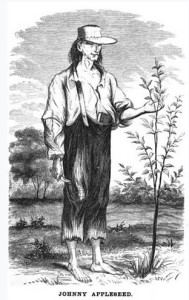22 April 2024
Science Friction
Where the Known Meets the Unknown
Michael Shermer
Times Books: Henry Holt, 2005. 296pp. Introduction . Notes (thoughtfully marked in-text). Index.
I’ve been a Shermer fan for many years, particularly when I subscribed to his magazine, Skeptic, before moving to Saudi. And I already have Why People Believe Weird Things (1997) and The Borderlands of Science (2001) on my bookshelf. So why am I just getting around to this 2005 book? Simple: I just found it at a used book sale and figured I ought to get it.
Here’s one of Shermer’s key points: “There are no ‘facts’ in science, in the sense of something being proven 100 percent. One thing that is certain in science is that nothing is certain in science” (39).
Now the highlights
- 3-D “Impossible Crate” illusion (xv) – optical illusions and the power of beliefs to determine perceptions (“I wouldn’t have seen it if I hadn’t believed it”)

- Therapeutic Touch (xxv) – How the youngster Emily Rosa (left) did a professional debunking experiment (c 1996)

- Psychic for a Day (Ch 1) – How he learned to perform tarot card and palm reading, astrology and mediumship. He learns the “Rainbow Ruse,” “Fine Flattery,” and “Barnum reading.”
- the “Bright” brouhaha (Ch 2) – his group’s attempt to address the “labeling issue” regarding skeptics, free thinkers, humanists, atheists, agnostics et al. In 2003 they introduced the term “brights” and they were immediately (and justifiably) scorned as being “elitist” (among other accusations.) Most popular alternative: “Critical thinkers” and “Freethinkers” (though this was also most divisive)
- Anthropology Wars – Napoleon Chagnon vs Patrick Tierney and the Yanomamö people of Amazonia. (Ch 5)
- Alt med: “The world of complementary and alternative medicine is complex and murky, particularly in the cancer community” (105). “We are typically offered a choice between scientific medicine that doesn’t work and alternative medicine that might work…but alternative medicine is not a matter of everything to gain and nothing to lose. There is much to lose” (106). (See the website What’s the Harm?)
- Mutiny on the Bounty – what really happened? (Ch 8). It seems Capt. Bligh, despite a habit of “bad language” wasn’t really so bad, regarded more as a professional, humanitarian leader (125). Verdict: evolutionarily adaptive emotions (competing desires for status) expressed nonadaptively (129)
- The case of the QWERTY keyboard (138) and the witch craze movement (143) — fascinating but he ties these inexplicably to what he calls LaPlace’s Demon
- What If? (Ch 10) – “counterfactual conditioners” e.g. What if the South had won the Civil War?
The book really gets abstruse at this point and continues throughout with hard-to-understand charts and diagrams despite seemingly clearcut premises. Frankly, I was skimming a lot.
- Star Trek – Gene Roddenberry vs Harlan Ellison and what is arguably the finest program in the series, “The City on the Edge of Forever.” Oddly, Shermer plans to use this show as the centerpiece of an elaborate discussion and says “so it bears brief synopsis” — but then launches into complex diatribes by Ellison about “egocentric Roddenberry” and the history of Ellison’s original script without a word about the episode’s actual plot…until 3 full pages later.
Now, there are problems. In some places the writing and syntax gets a bit confusing.
The big issue, though — at least for the non-professional, non-PhD reader — is that the discussions get unbelievably abstruse and almost impossible to parse in at least half the book. We can’t necessarily blame Shermer for this since he does in fact have good academic credentials but, check this:
“These thematic pairs help illuminate what is really going on in the so-called evolutions wars. When Gould, Lewontin, and Eldredge are pitted against Dawkins, Smith, and Dennet, it is almost always along a spectrum of one of these five themata [cited earlier]. Maynard Smith’s claim that Gould’s ideas are confused and that he is giving non-professionals the wrong ideas about evolution is an indictment of Gouldian theory against others’ data. Wright envisions a cyclical metaphor of time with directionality generating purpose, and thus is critical of Gould’s emphasis on the directionless arrow in a purposeless cosmos…Gould’s theory of punctuated equilibrium, but he prefers phyletic gradualism…”
…and continues on in this vein for another couple hundred words (262).
In sum, what we’d really like in a book like this is what Shermer calls “a literary style that balances professional scholarship with popular exposition.” (263) Maybe we could send Bart Ehrman over to help him out.





















